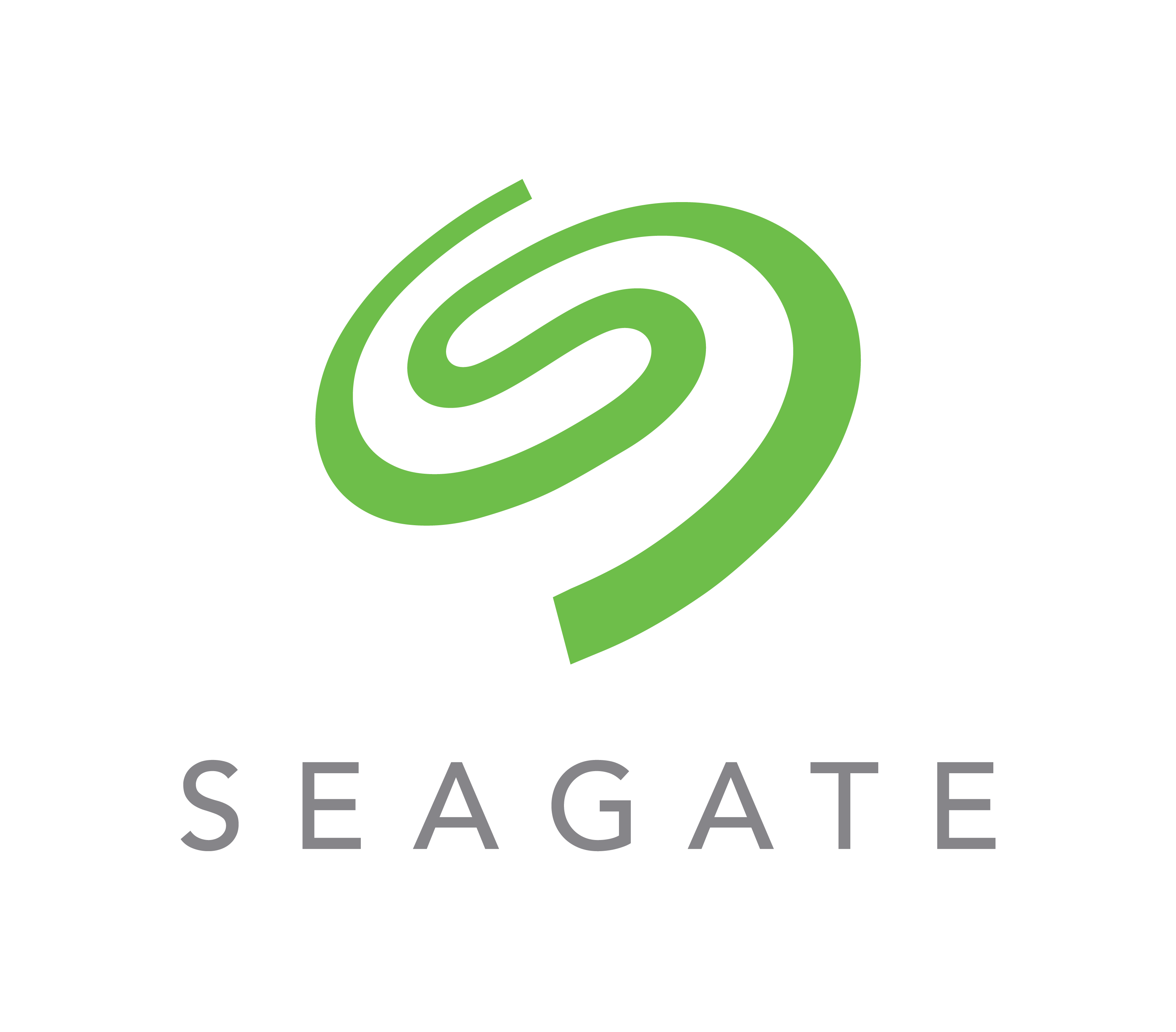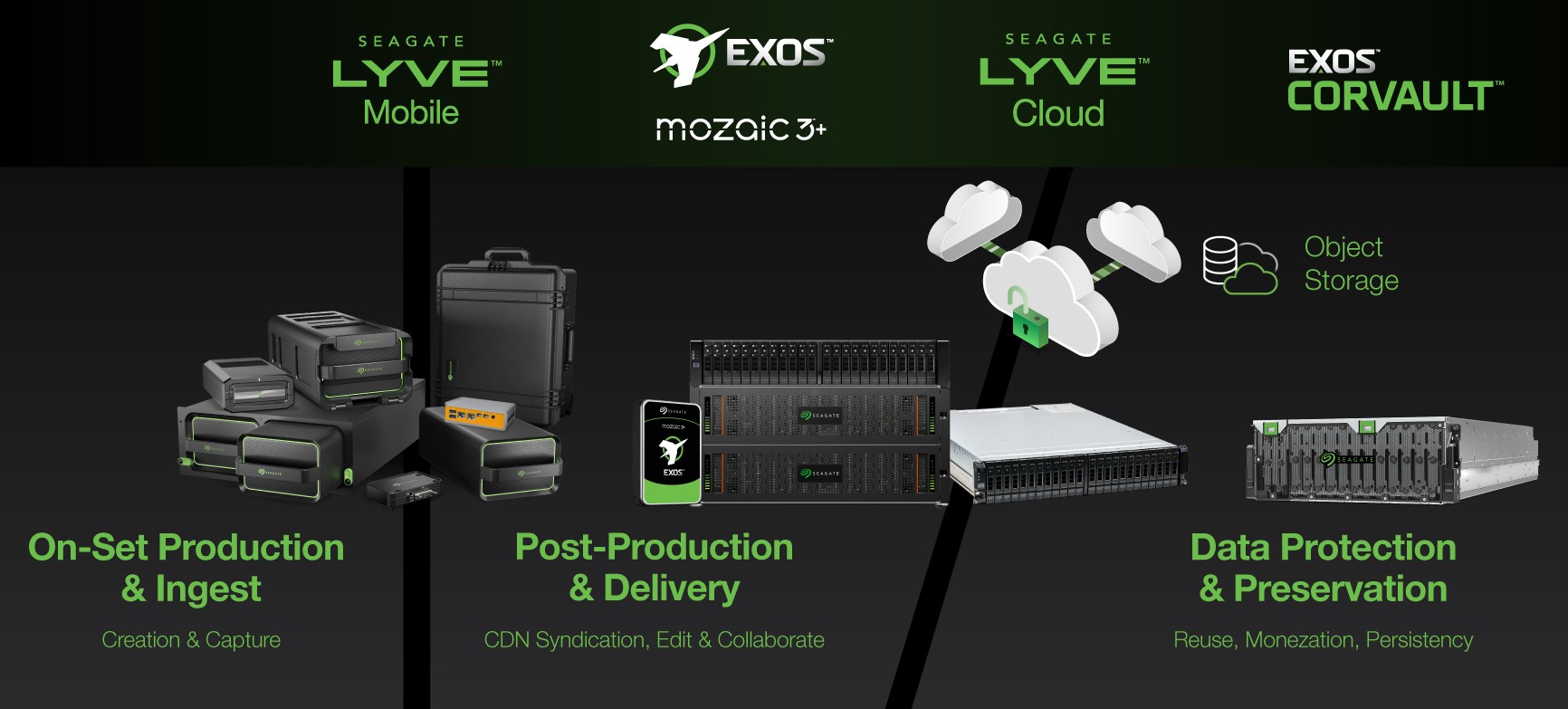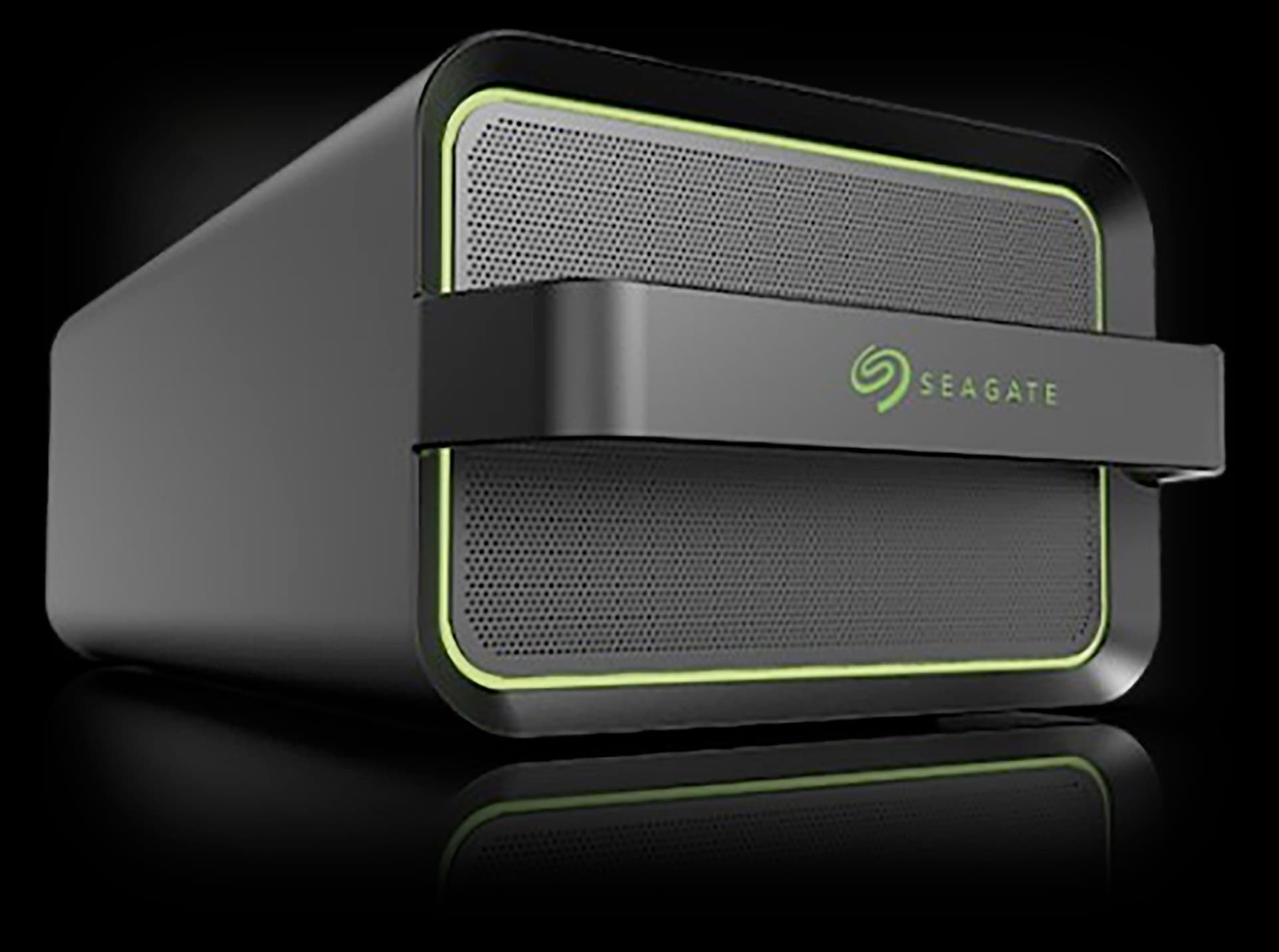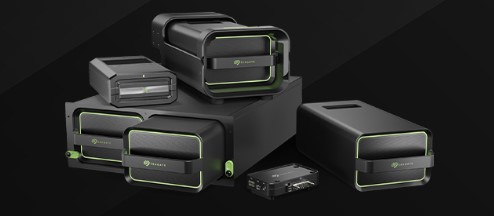Edge Storage
"Just" a Hard Drive
Hard drives are the unassuming backbone of the world's digital infrastructure. But, there's more to Seagate hard drives than meets the eye. We create some of the most advanced nanoscale technology and material science in the world—harnessing heat, light, and bits to record more data than ever before. Seagate hard drives are where the future is read and written.
Heat-Assisted Magnetic Recording (HAMR) accelerates areal density.
Read/Write heads move across disk space with nanoscale precision.
Superlattice material maintains thermal stability with each grain recorded.
Magnetic sensor based on Nobel-winning tech instantly retrieves data.
The Future of Data Storage Is Here with Mozaic 3+
Culminating in a breakthrough collection of nanoscale technologies, Mozaic 3+™ is a hard drive platform that incorporates Seagate’s unique implementation of HAMR to deliver mass-capacity storage at unprecedented areal densities of 3TB per disk and beyond, enabling data center efficiency like never before.
7 Reasons to make your move to the Edge
- Understand your business needs: IT decision makers and infrastructure and operations IT professionals need to understand the specific needs of your organization. This includes the amount of data you manage, the speed at which you need to access it, and what kind of data analytics capabilities you require.
- Assess your current infrastructure: Evaluate the current IT infrastructure to determine your organization’s readiness for implementing edge storage. This includes identifying potential challenges and gaps, such as network capacity, security, and data management capabilities.
- Protect with data security: Implement robust security measures to protect sensitive data. This includes encryption, access controls, and regular security audits. Edge storage can be a target for cyberattacks, so having a strong security strategy in place is crucial.
- Choose the right solution: Not all edge storage solutions are created equal. It’s important to select a solution that aligns with your unique requirements, initiatives, and budget. Factors to consider include scalability, performance, security, and cost.
- Implement a pilot program: Before going all in, it could be beneficial to start with a pilot program. This allows you to see how well the edge storage solution works within your infrastructure and what kind of challenges you might face.
- Conduct regular maintenance and updates: Once implemented, regular maintenance and software updates are necessary for the smooth operation of edge storage. This helps optimize storage performance and ensure data security.
- Plan for data governance: With edge storage, data governance becomes more complex due to decentralization. Develop a clear data governance policy that outlines how data is collected, stored, accessed, and used. This will help ensure compliance with data privacy regulations and maintain data integrity.
Deploy Cost Effective Storage and Data Workflow Solutions at the Edge
Storage at the edge involves locally storing data on devices or servers near its origin, bypassing the need to send it to centralized data centers or cloud storage. This common strategy in edge computing prioritizes low-latency processing and real-time analytics, helping organizations minimize latency, bandwidth usage, and enhance performance for applications requiring rapid data access. Edge storage includes various devices like solid-state drives (SSDs), hard disk drives (HDDs), or specialized appliances tailored for specific environments or use cases.
The convergence of physical and digital realms at the edge facilitates real-time data reception, processing, generation, consumption, and transfer between applications, users, or systems. As more applications rapidly transition to the cloud, the importance of enhancing performance and reducing operational costs has become increasingly crucial. This objective is achievable by positioning solutions at the edge.
Storage at the Edge
Edge storage devices, utilizing solid-state drives (SSDs) or advanced NVMe SSDs, store data at the network edge, minimizing data transfer to centralized storage or cloud services. This approach reduces latency and optimizes data processing by storing information closer to the source of generation.
Furthermore, sensitive information is kept within its country of origin to comply with regulations like GDPR that mandate user data protection and limit cross-border transfer.
Edge storage also reduces bandwidth costs and mitigates the risk of network failures, as data doesn’t always need to be sent back to a central server for processing. It’s an integral part of edge computing strategies, helping organizations manage the massive influx of data generated by today’s digital technologies.
In computer networking, an edge device serves as the gateway into enterprise or service provider core networks. Examples encompass routers, routing switches, integrated access devices (IADs), multiplexers, and various metropolitan area network (MAN) and wide area network (WAN) access devices.
Ecosystem From Edge to Cloud and Everything in Between
Traditional IT infrastructure centralized resources in data centers, requiring data exchange at the edge to traverse to the core for processing. This approach introduces challenges in latency and bandwidth, particularly when managing large data volumes. Edge infrastructure addresses these hurdles by dispersing computing and storage resources closer to micro, metro, and macro edge locations, where data is generated and consumed.
Storing data locally for efficient processing and analysis
Edge storage devices are designed to store data at the edge of the network, near the source of data generation, instead of sending data over a network to a centralized storage system or cloud. These devices typically use solid-state drives (SSDs) or next-generation NVMe SSD. The data stored on edge devices can be processed locally or moved to a central location for further analysis as needed.
Overall, edge storage is a key component in the effectiveness of edge computing, helping to improve the speed, efficiency, and reliability of your IT network. Some benefits include:
- Reducing the need to transmit large amounts of data across the network with bandwidth optimization.
- Processing data in real-time or near real-time, enabled by reduced latency.
- Improving security and limiting data exposure by storing at the edge of the network, as it doesn’t have to travel across the network to a central location.
Our Partner Seagate, Leading in Data Storage Solutions

Seagate stands as a global leader in data storage solutions, renowned for its vast range of hard disk drives, solid-state drives, and data recovery services. As an industry pioneer, Seagate continuously pushes the boundaries of innovation to provide reliable and cutting-edge storage options for both consumers and enterprises. Their expertise in data management helps to meet the growing demands of the digital world, ensuring security, scalability, and efficiency. Seagate’s commitment to excellence makes them a trusted partner for businesses looking to secure their data infrastructure.
Workflow-Optimized Media Storage Solutions & Services

Edge Storage Solutions
Lyve Mobile Arrray
Store mass data at the edge and transfer it in days, not weeks.

Features
Lyve® Mobile Array puts mass data in motion from edge to cloud. Designed for edge storage applications, this portable, rackable solution easily integrates into any data management workflow for versatile, high-capacity, and high-performance data transfers. With industry-standard AES 256-bit hardware encryption and key management in a rugged, lockable transport case, this device provides superior transport and security for your data.
- High Capacity & Speed
Store mass data with up to 122TB in a single array (available in HDD, SSD, and NVMe) and achieve high performance transfer speeds via Thunderbolt 3, USB-C, or PCIe. - Plug-and-Play
Automate your workflow with versatile interfaces and a ready-to-use storage array. - Flexible Subscription
Efficient subscription service model transforms data storage from a CapEx to an OpEx. - Always ReadyThis edge storage solution is non-labor intensive and ready for use at the edge, office, and data center.

World -Class Security
Lyve Mobile adheres to the most stringent, globally recognized data security standards and is ISO 27001:2013 and SOC2® certified. No matter the environment or endpoint device, Lyve Mobile accelerates data transfers to any landing destination, and does so securely thanks to ruggedized enclosures, online/offline user management and permissions, Seagate Secure™ technology, and government-grade crypto erase for completed projects.

Lyve Mobile Array Product Overview
Does your business need to move mass data from edge to cloud? Lyve™ Mobile Array from Seagate has you covered. As a portable solution that easily integrates into any data management workflow, you can combine it with the Lyve Mobile Rackmount Receiver, turning your Mobile Array into a data center storage system with redundant power and high-speed interfaces. Get versatile, high-capacity, and high-performance data transfers—all centered around a subscription-based model that lets you pay only for the device you need, when you need it. Equipped with industry-standard AES 256-bit hardware encryption and key management in a rugged, lockable transport case, this device provides.
Data Transfer on Your Terms
Easily move high volumes of data across your enterprise in a fast and secure manner.
With Lyve Mobile Array, you’re in control of your data’s movement. Transport data from edge to cloud and everything in between.
High-performance data transfer and a secure, ruggedized transport case accelerate time to insights by skirting poor network connectivity and bandwidth issues.
Data Transport
Transport data without network dependencies, store it securely where it is created, and ensure its physical protection with a ruggedized, lockable case that's been tested against military standards.
Workflow Management
Live Mobile Array was purpose-built for edge-to-cloud mass-data workflows-even in mobile applications. Store, consolidate, and distribute your business data to where it has the most value.
Seagate + Milestone Surveillance Solution
How Industries can benefit from Edge Storage Solutions Now and in the Future
Edge storage has many use cases across different industries to solve today’s data challenges.
In the manufacturing industry, edge storage is used for real-time quality control and optimization. Sensors on assembly lines can detect faults and anomalies, storing the data locally for immediate analysis and troubleshooting.
In agriculture, sensors and GPS on farming equipment increase crop yields and reduce costs on fertilizers and pesticides. Field sensors gather data on soil conditions, weather, and crop health, which is stored locally for instant analysis and action.
Artificial intelligence (AI), machine learning (ML), and big data analytics will contribute to a growing emphasis on data-driven decision-making. This will fuel the need for edge storage and technologies like STaaS and SDS, as these technologies enable efficient storage, management, and analysis of large datasets.
Finally, as more organizations move operations to the cloud, the demand for storage as a service (STaaS) and software-defined storage (SDS) will increase. These technologies allow for cost-effective, scalable, and flexible storage solutions that are ideal for cloud computing environments.
What Does Smart Manufacturing Mean for Your Business?
Deep learning is transforming manufacturing. At Seagate, we see a historic opportunity to derive previously untapped value from data right on the factory floors. Seagate’s Executive Vice President Jeff Nygaard explains what the smart manufacturing revolution might mean for your business.
Explore Your Edge Storage Solution
Take Control of your Data Transfer & Transport Costs when Moving Data across Your Enterprise
Contact us to explore how our Edge Storage Solutions can transform your computational capabilities.
Next Steps for Better Edge Storage and Improved Sustainability
With a forecasted growth in the usage of SSDs and cloud storage, organizations can complement sustainability efforts with your storage plans. Leverage ‘inherent sustainability,’ which is the result of doing a technology refresh on storage systems. By upgrading, you help meet sustainability requirements, as the newer storage technology provides larger capacity and lower latency and utilizes less power and energy to run.
For those enterprises leveraging cloud storage solutions such as hybrid cloud storage, STaaS, or SDS, one way to improve sustainability is by using third-party data center providers like Digital Reality or Equinix. These companies have mandates and policies to use 100% renewable energy to run their data centers. As a result, you can leverage these certifications and showcase your sustainability commitment.
SHI offers next-gen IT infrastructure services including hybrid data centers, networking, data management, and cloud services, helping you accelerate modernization, protect and store data, and support sustainability goals. Solve tomorrow’s challenges today with our strong data storage and protection partnerships.




Schrijf in voor onze Nieuwsbrief
Hebt u vragen of hulp nodig? Wij helpen u graag.
